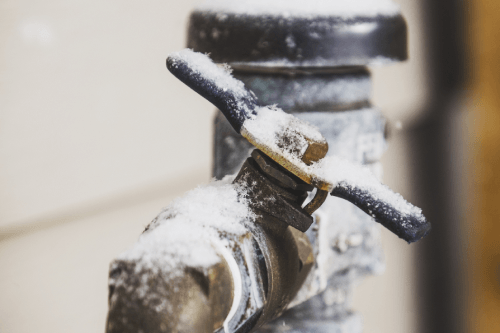Preventing Frozen Plumbing in Winter: Professional Advice
Preventing Frozen Plumbing in Winter: Professional Advice
Blog Article
Are you searching for selective information involving Preventing and dealing with frozen pipes?

Cold weather can wreak havoc on your plumbing, particularly by freezing pipelines. Below's just how to avoid it from occurring and what to do if it does.
Introduction
As temperatures drop, the risk of icy pipelines boosts, potentially resulting in costly fixings and water damages. Understanding just how to avoid icy pipes is crucial for home owners in chilly environments.
Avoidance Tips
Insulating vulnerable pipes
Cover pipelines in insulation sleeves or use warmth tape to protect them from freezing temperatures. Concentrate on pipelines in unheated or external areas of the home.
Heating methods
Keep indoor rooms adequately warmed, specifically locations with pipes. Open up closet doors to permit cozy air to flow around pipelines under sinks.
Just how to identify frozen pipes
Seek decreased water flow from taps, unusual odors or sounds from pipes, and noticeable frost on revealed pipelines.
Long-Term Solutions
Architectural modifications
Think about rerouting pipes away from outside walls or unheated areas. Include additional insulation to attics, basements, and crawl spaces.
Updating insulation
Invest in premium insulation for pipes, attic rooms, and wall surfaces. Correct insulation aids keep constant temperatures and minimizes the risk of icy pipes.
Protecting Exterior Plumbing
Yard tubes and outside taps
Detach and drain pipes garden pipes prior to winter season. Mount frost-proof spigots or cover outside taps with insulated caps.
Recognizing Frozen Pipes
What creates pipelines to freeze?
Pipes freeze when revealed to temperatures below 32 ° F (0 ° C) for extended periods. As water inside the pipes ices up, it increases, putting pressure on the pipe walls and possibly triggering them to rupture.
Threats and problems
Icy pipes can bring about water disruptions, building damages, and pricey fixings. Ruptured pipelines can flood homes and cause extensive structural damages.
Indications of Frozen Pipeline
Identifying icy pipelines early can prevent them from breaking.
What to Do If Your Pipelines Freeze
Immediate actions to take
If you believe frozen pipes, keep taps open to relieve stress as the ice melts. Utilize a hairdryer or towels soaked in warm water to thaw pipelines slowly.
Verdict
Avoiding icy pipelines calls for aggressive measures and fast feedbacks. By understanding the causes, indications, and preventive measures, home owners can shield their plumbing throughout cold weather.
5 Ways to Prevent Frozen Pipes
Drain Outdoor Faucets and Disconnect Hoses
First, close the shut-off valve that controls the flow of water in the pipe to your outdoor faucet. Then, head outside to disconnect and drain your hose and open the outdoor faucet to allow the water to completely drain out of the line. Turn off the faucet when done. Finally, head back to the shut-off valve and drain the remaining water inside the pipe into a bucket or container. Additionally, if you have a home irrigation system, you should consider hiring an expert to clear the system of water each year.
Insulate Pipes
One of the best and most cost-effective methods for preventing frozen water pipes is to wrap your pipes with insulation. This is especially important for areas in your home that aren’t exposed to heat, such as an attic. We suggest using foam sleeves, which can typically be found at your local hardware store.
Keep Heat Running at 65
Your pipes are located inside your walls, and the temperature there is much colder than the rest of the house. To prevent your pipes from freezing, The Insurance Information Institute suggests that you keep your home heated to at least 65 degrees, even when traveling. You may want to invest in smart devices that can keep an eye on the temperature in your home while you’re away.
Leave Water Dripping
Moving water — even a small trickle — can prevent ice from forming inside your pipes. When freezing temps are imminent, start a drip of water from all faucets that serve exposed pipes. Leaving a few faucets running will also help relieve pressure inside the pipes and help prevent a rupture if the water inside freezes.
Open Cupboard Doors
Warm your kitchen and bathroom pipes by opening cupboards and vanities. You should also leave your interior doors ajar to help warm air circulate evenly throughout your home.

I came across that write up about Winter Plumbing Precautions: Preventing Frozen Pipes when doing a lookup on the search engines. In case you enjoyed reading our page plz do not forget to pass it around. Thanks a bunch for your time. Come back soon.
Booking Page Report this page